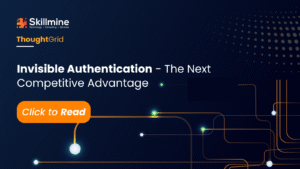According to Cybersecurity Ventures, the damage caused by cybercrime is predicted to grow to $10.5 trillion by 2025. In the context of the rising cyberattacks, society often criticizes hackers as a cyber security threat, yet amidst this cyber threat, there exists a positive aspect known as White Hat or Ethical Hacking. As the name implies, ethical hacking represents the flip side of the hacking coin and is often employed by the Central Intelligence of major nations to ensure digital security.
What is Ethical Hacking?
The NIST Computer Security Resource Center defines a hacker as an “unauthorized user who attempts to or gains access to an information system.” At its core, an ethical hacker assumes the role of an attacker, meticulously assessing a computer network’s security to minimize risks.
The crucial distinction between ethical and nonethical hacking lies in intent, specifically the presence or absence of malicious motives. The permission to attack, termed “the scope” of the test, becomes pivotal in differentiating ethical practices and maintaining legal and ethical boundaries.
Ethical Hacker vs. Nonethical Hacker
A data security researcher actively seeking vulnerabilities in products, applications, or web services is considered an ethical hacker when responsibly disclosing findings to relevant vendors or owners. Utilizing the same research to gain unauthorized access transforms it into nonethical hacking, posing potential risks to targeted networks or systems.
Even disclosing vulnerabilities publicly without collaboration with vendors could inadvertently contribute to nonethical hacking. This underscores the ethical hacker’s commitment to collaboration and responsible disclosure, mitigating the risk of information misuse.
How Ethical Hackers Safeguard Digital Frontiers
Ethical hackers or White Hat hackers emerge as technological trailblazers, contributing valuable insights through their curiosity and unconventional approaches to exploring complex systems. The importance of these data security crusaders has grown amid the escalating wave of cybercrime.
Major companies hire hackers to assess program vulnerabilities, with some offering “bug bounties” to those who identify security flaws. These experts, using their skills for the greater good, play a pivotal role in safeguarding against malicious intentions and potential destruction.
Companies can engage with the ethical hacking community through various means, with the most common being the establishment of a communication channel. This can be achieved by implementing a bug bounty program or a Vulnerability Disclosure Program (VDP).
Title: What is a Bug Bounty Program?
A bug bounty program allows companies to compensate hackers for identifying vulnerabilities, attracting top-tier talent to assess software and networks for weaknesses. While effective, it demands more effort on the company’s part in terms of validation, remediation, payment processing, and communication with hackers.
Title: What is a Vulnerability Disclosure Program (VDP)?
A VDP adopts a ‘see something, say something’ approach. If individuals discover vulnerabilities while interacting with a company’s assets, they can report them. While this model doesn’t involve financial compensation, it acknowledges the hackers’ efforts and establishes a channel for vulnerability reporting.
Both approaches can be implemented directly by organizations and facilitated through third-party platforms designed to manage these programs more efficiently.
The Role of Innovative Technologies
In conjunction with ethical hackers’ endeavors, advanced security solutions driven by innovative technologies assume a pivotal role in reinforcing digital defenses. Artificial Intelligence and Machine Learning algorithms scrutinize extensive data to discern anomalies and patterns indicative of potential threats.
Zero Trust Architecture
Innovative technologies facilitate the adoption of Zero Trust Architecture, where trust is never assumed, and verification is mandated for everyone, regardless of their location or network access. This model mitigates the risk of unauthorized access and lateral movement within a network.
Biometric Authentication
Traditional passwords are progressively being complemented or supplanted by biometric authentication methods such as fingerprint scanning, facial recognition, and voice authentication. These technologies add an extra layer of security and reduce the risk of unauthorized access.
Endpoint Security Solutions
Given the escalating prevalence of remote work and the ubiquity of mobile devices, securing endpoints becomes paramount. Innovative technologies deliver robust endpoint protection, safeguarding devices like laptops, smartphones, and tablets against various threats.
Network Traffic Analysis
Considering that nearly all software today connects to the internet, Network Traffic Analysis monitors network traffic for suspicious activity. As a broad term, Network Traffic Analysis has become integral to defensive monitoring, encompassing Security Operations Centers, Intrusion Detection Systems, and more.
User and Entity Behavior Analytics (UEBA)
UEBA tools scrutinize user behavior patterns to detect anomalies signaling potential security threats. By comprehending normal user behavior, these tools can identify unauthorized access or suspicious activities, enabling organizations to respond promptly.
Cloud Security Solutions
As entire countries and more traditional companies transition to the cloud, Cloud Security Solutions are addressing the associated challenges. Cloud Detection and Response (CDR), Cloud Infrastructure Entitlement Management (CIEM), Cloud-Native Application Protection Platform (CNAPP), and Cloud Security Posture Management (CSPM) have emerged to meet specific customer needs.
Threat Intelligence and Information Sharing
Advanced security solutions tap into threat intelligence feeds, aggregating information on known threats and vulnerabilities. This collaborative approach empowers organizations to stay informed about emerging threats and fortify their defenses accordingly. By concurrently engaging in defensive and offensive strategies, companies can amass knowledge and comprehension of the most advanced threats in their environments.
Conclusion
In an era characterized by interconnectivity and where data reigns supreme as the new currency, the collective endeavors of businesses, ethical hackers, and the latest security solutions are paramount for protecting the digital realm. As technology evolves, Skillmine’s dedication to securing the expanding digital landscape becomes even more crucial. Our cybersecurity services are equipped with the expertise and a commitment to tackle cyberattacks responsibly.
Looking for expert technology consulting services? Contact us today.





